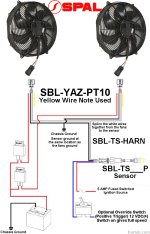The Unknown
Well-known member
Trying to finalize my cooling setup and am wondering if anyone has any experience with this company? DeltaPAG. I cannot seem to locate the SPAL 14" brushless fan and found these guys while searching.
Also wondering if there is a link to some sort of formula for calculating core size? Maybe it was manufacturer specific but early in the thread Hydrodynamic posted what looked like radiator size to HP efficiency.. Seems like it would be a useful exercise to ballpark.
Also wondering if there is a link to some sort of formula for calculating core size? Maybe it was manufacturer specific but early in the thread Hydrodynamic posted what looked like radiator size to HP efficiency.. Seems like it would be a useful exercise to ballpark.
